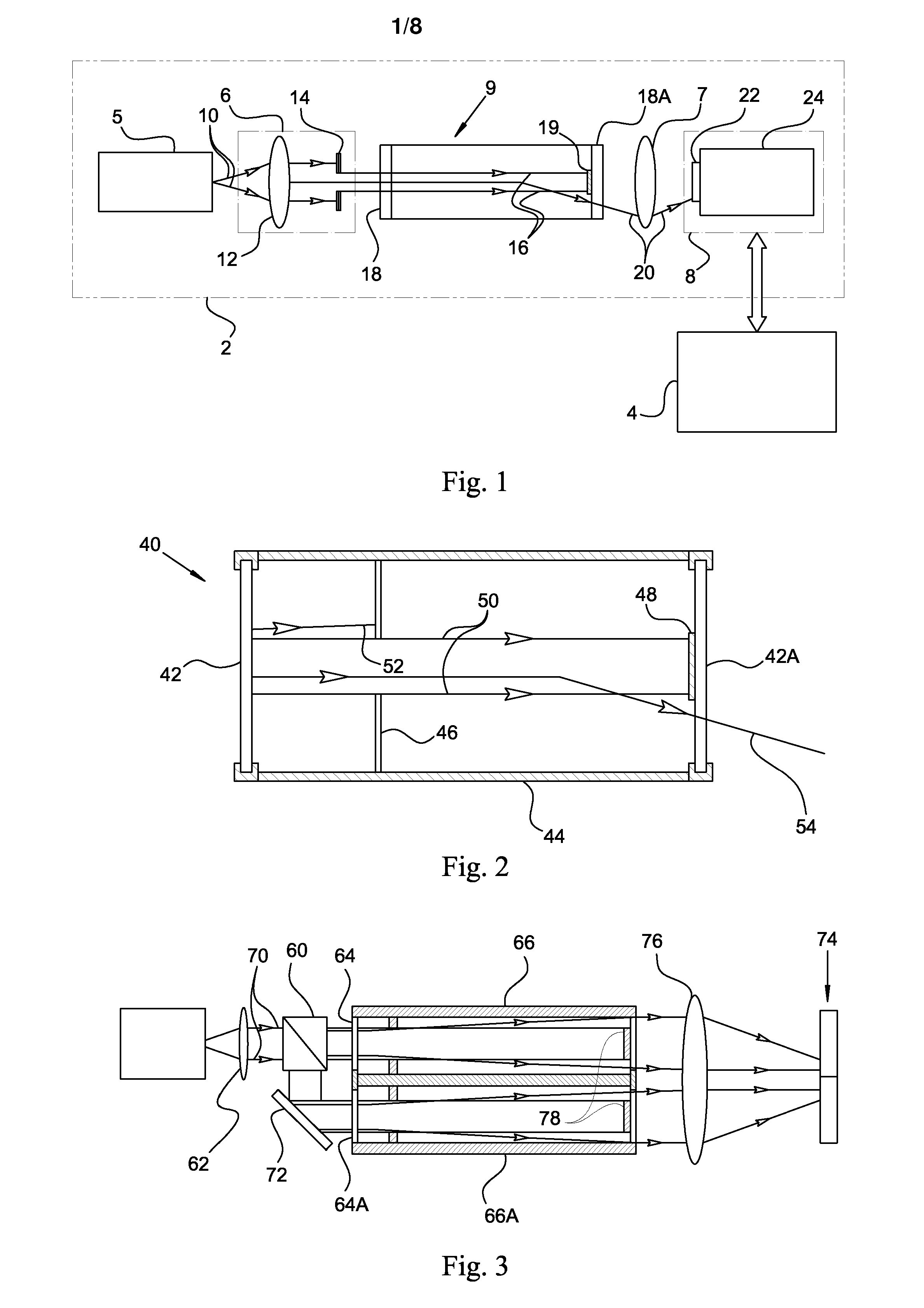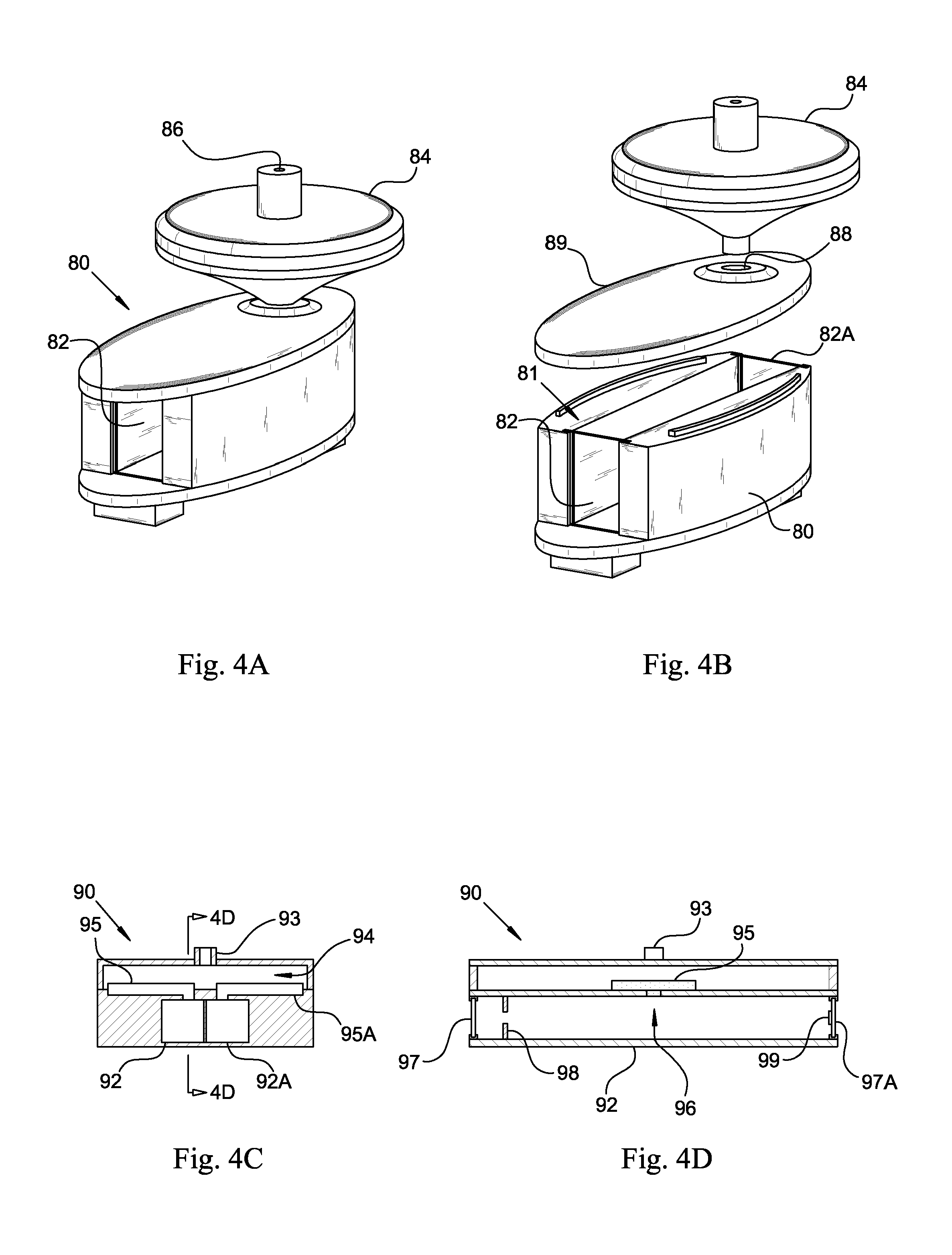Detecting bacteria in fluids
a technology of fluid and detection method, applied in the field of detecting bacteria and optically testing urine, can solve the problems of time and resource consumption, requiring skilled operators, and both above mentioned methods failing to detect bacteria that do not generate those products,
- Summary
- Abstract
- Description
- Claims
- Application Information
AI Technical Summary
Problems solved by technology
Method used
Image
Examples
example 1
[0051] A simulated analysis of an angular scattering distribution was conducted. A synthetic model of urine was made in which 2-4 microns diameter spheres having the same dielectric constant as that of bacteria were included. Salt particles are represented by spheres having a radius that is smaller than one micron and a matching dielectric constant. Calculations are based on the scattering Mie theory [H. C. van de Hulst. “Light scattering by small particles”, John Wiley & Sons publishing, NY, 1957]. Reference is now made to FIG. 5 showing a plot of the simulated angular scattering distribution function of suspensions of the two kinds of particles described above. Curve 101 represents the intensity of light scattered by the suspension of particles representing bacteria. Curve 102 corresponds to the intensity of light scattered by the small particle representing crystalline salt particles in urine. The intensity is shown in a logarithmic scale and is represented in polar coordinates v...
example 2
[0052] Measurements described below were taken by employing a system in which the light source is a laser diode of a specific wavelength and intensity and an CU having one cuvette. An elaborated model of urine containing bacteria was prepared and a scaled geometry of the system described in FIG. 1 to which reference is again made was employed as follows: [0053] 1) The dimensions of bacteria are defined in the literature. [0054] 2) The bacteria are randomly dispersed in the illuminated volume of the sample of fluid. [0055] 3) The light source of the model is a laser diode having the same features as the light source of the system employed in the actual measurements. [0056] 4) The angular intensities of scattered light for each single bacterium were calculated using the above mentioned Mie scattering model. [0057] 5) Scattered light rays are optically traced using a model of the optical unit employed for the actual measurements. [0058] 6) The power density of the scattered beam is cal...
example 3
[0061] Light scattering measurements were conducted by employing the same optical unit and CUs as is described in example 2 above and several urine samples supplemented with bacteria at different bacterial concentration levels. Bacterial concentration levels were independently calibrated by employing incubation as in the prior art. Reference is now made to FIGS. 7A-7D in which are shown typical angular scattering distribution functions of infected urine at bacterial concentration levels of 103, 104, 105, and 106 CFU / ml respectively. Scattering profiles were derived from these typical distribution functions by averaging over most of the azimuth range. In FIG. 8 a graph comparing the scattering profiles corresponding to the measured angular distribution functions of FIGS. 7A-7D is shown. Plots 123, 124, 125 and 126 represent these scattering profiles of infected urine at the same bacterial concentration levels as FIGS. 7A-7D respectively.
[0062] A typical urine sample known to be cont...
PUM
| Property | Measurement | Unit |
|---|---|---|
| surface roughness | aaaaa | aaaaa |
| width | aaaaa | aaaaa |
| surface roughness | aaaaa | aaaaa |
Abstract
Description
Claims
Application Information
 Login to View More
Login to View More - R&D
- Intellectual Property
- Life Sciences
- Materials
- Tech Scout
- Unparalleled Data Quality
- Higher Quality Content
- 60% Fewer Hallucinations
Browse by: Latest US Patents, China's latest patents, Technical Efficacy Thesaurus, Application Domain, Technology Topic, Popular Technical Reports.
© 2025 PatSnap. All rights reserved.Legal|Privacy policy|Modern Slavery Act Transparency Statement|Sitemap|About US| Contact US: help@patsnap.com



